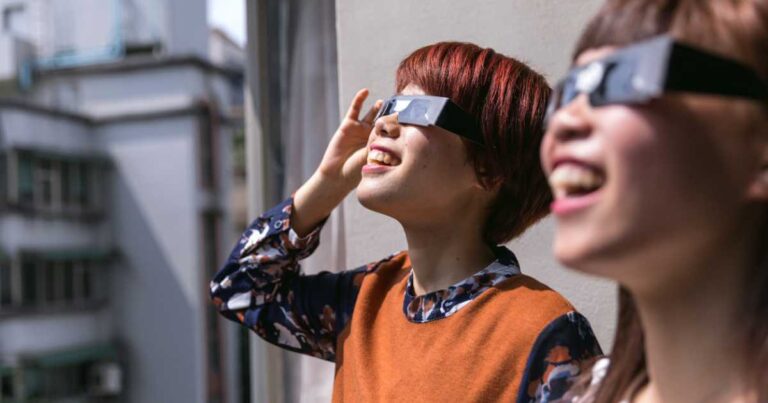Mark your calendars because on Saturday, October 14, 2023, North, Central, and South America will be treated to a breathtaking celestial spectacle: an annular "ring of fire" solar eclipse. This stunning event will be visible in the skies of the United States, Mexico, and various countries in South and Central America. If you plan to take in the solar show, it's crucial to prioritize safety. Here's everything you need to know to protect your eyes and enjoy this natural wonder.
How to Watch the “Ring of Fire” Eclipse Safely
SafeWise experts have years of firsthand experience testing the products we recommend. Learn how we test and review.
- Annular "Ring of Fire" eclipse will visible in the US on Saturday, October 14, 2023.
- Never look at the sun—especially an eclipse—without protective eyewear.
- Learn how to safely view the eclipse with our tips.
Sign up for our free weekly newsletter to get the best safety news, product info, and deals.
By signing up, you agree to our Terms and Conditions and Privacy Policy.

Image: LeoPatrizi
When and where to watch the solar eclipse
The annular solar eclipse will first appear in the US in Oregon at 9:13 a.m. PDT and conclude in Texas at 12:03 p.m. CDT, with the best views available in the western half of the United States. This eclipse promises to be remarkable, but you need to be prepared to prevent eye damage.
Safety first: Eye protection is non-negotiable
Gazing directly at a partial or annular solar eclipse is unsafe without appropriate eye protection. There's no instance of totality where the moon entirely obscures the sun's radiant surface in an annular eclipse. You can safely view the eclipse through solar telescopes, special filters in front of telescopes, or dedicated eclipse glasses and viewers. Your eyes are incredibly delicate, and even a brief glance at the sun can lead to irreversible damage.
Where to get eclipse glasses, filters, and viewers
When searching for eclipse glasses or solar viewers, ensure they comply with the ISO 12312-2 international safety standard for direct sun viewing. Beware of counterfeit products on the market. To find reputable suppliers, refer to the American Astronomical Society's list of legitimate providers. It's smart to call ahead to make sure your local store has viewers on hand.
DIY: Make your own eclipse viewer
If you can't find glasses or a viewer—and you're crafty—you can make a pinhole projector. Pinhole projectors let you indirectly view the eclipse. This simple device projects the sun's image onto cardboard or paper so you can experience the eclipse safely. NASA offers a helpful video tutorial on how to create your pinhole projector.
Using telescopes, binoculars, or cameras
If you plan to observe the eclipse through telescopes, binoculars, or cameras, use solar filters to protect your eyes and equipment. The American Astronomical Society provides information on where to purchase these filters.
Regular sunglasses: They are not suitable for observing the sun.
Welding shields: Most welding shields are not appropriate for eclipse viewing. For direct solar viewing, a welding filter or shield must be Shade 12 or higher to guarantee safety.
Camera lenses or optical devices: Never look at the sun through a telescope, camera lens, binoculars, or any optical device while wearing eclipse glasses or using a handheld solar viewer. If you want to use an optical device with a solar filter, use that only—don't add eclipse glasses to the mix.
Signs of eye damage and when to seek care
Staring at the sun, even briefly, can lead to solar retinopathy, causing a blind spot in your central vision. Symptoms may not be immediately apparent, so if you experience any discomfort or vision changes following the eclipse, consult an eye doctor promptly. Treatment options for solar retinopathy are limited, with observation and time being the primary course of action.
The October 14, 2023, annular solar eclipse is an event you won't want to miss. But your eyes' safety and health should always come first. By following these guidelines and prioritizing proper eye protection, you can fully savor the "ring of fire" without compromising your vision.
Recent Articles



